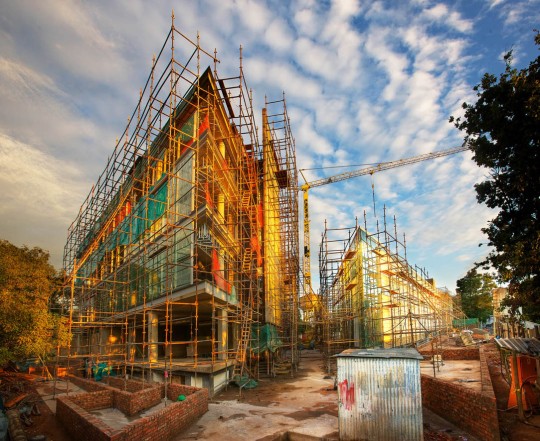High Dynamic Range. Traditionally, merging at least two different exposures of the same image into one. Using the highlights of a underexposed image and the Shadows of an overexposed image…

The reason this technique is used in the first place is because a camera traditionally did not have the ability to balance very dark shadows and very bright highlights. The above image is a perfect example of a situation where this technique is very helpful. Even with perfect first light, as the sun rises there is no way of naturally getting the foreground exposure within a close range of the sky, that’s due to all the trees around the foreground casting shadows on it while the sun climbs higher and higher, brightening up the sky more and more with every metre.
Prior to digital photography, the photographer would have had to use a combination of two analog techniques to try achieve this and if they were a true master of these they may have achieved something close.
Firstly, while shooting, the photographer would have used a graduated neutral density filter on the top half of the image to reduce the exposure down to a range closer to the foreground. Then when printing, they would need to use burn and dodge techniques during exposure of the film onto the photo paper.
Digital photography and computer applications have made this much easier and in general the overall quality of images being produced now, specifically by amature photographers, has increased significantly.
So is it a good thing? Well like anything used correctly, yes. Of course everyone has their own view on what looks good and what doesn’t and if you like something different then so be it. The opinion below is from a slightly purist point of view.

Subtle HDR will improve almost every photograph. All to often though, it’s just taken too far and when that happens images become unrealistic and cartoon like. Unless of course animation was the desired result.
Like any skill set, control and restraint is the difference between good and great. Knowing how far to push it before it’s fake.
The objective should be to get the image to look the best possible version of natural as you can get it. It needs to be believable, if believable is your goal.
HDR and other similar techniques are there to improve not create and are only necessary when there is no way achieving a great result with patients and use of natural light, for which there will never be any substitute.